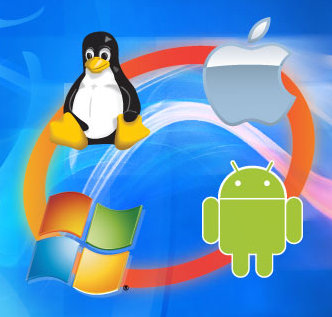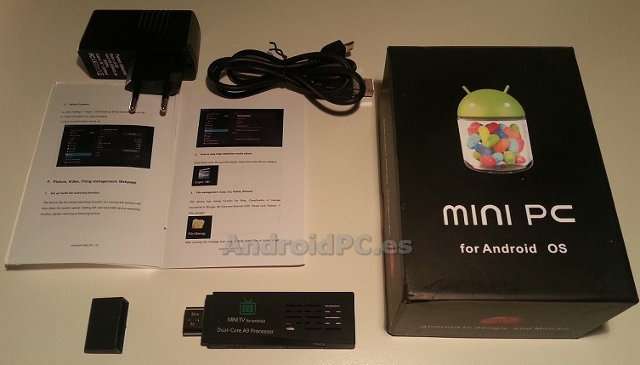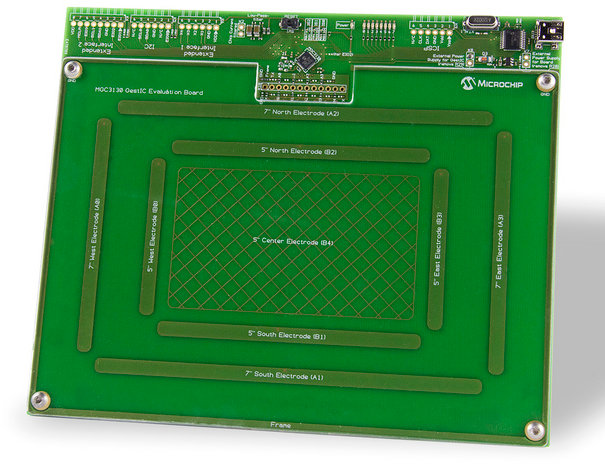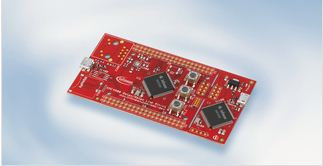The Leap Motion, a 3D gesture recognition USB device, has been announced in May, but developer kits have only recently been sent out to… developers, and lots of demo has started to pop up, many of which are posted on Leap Motion Facebook page. My favorite demo is the Airharp which, as the name implies, is an harp controlled by finger gestures you do in the “air”, as it demonstrates both the accuracy and responsiveness of the Leap Motion. The project is written by Adam Somers, Senior Software Engineer at Universal Studio and Stanford Alumni, who released both the binary and source code for this demo: AirHarp 0.1 – Binary built against Leap SDK v. 0.6.6 that lets you add & remove strings, cycle through scales and toggle between fullscreen and windowed mode. The source code for the Airharp which uses muskit, a C++ toolkit for music applications, both of which […]
Collabora and Fluendo Release GStreamer SDK for Android
Collabora and Fluendo have recently announced the availability of GStreamer’s Software Development Kit for Android, which allows developers to create multimedia playback applications for Android smartphones and tablets using Gstreamer and the Android NDK.. The GStreamer SDK for Android targets Android 2.3.1 Gingerbread or higher (API Level 9 or greater). However, due to some of the restrictions of previous versions of Android, some features such as hardware acceleration are only available on Android 4.1 Jelly Bean (API Level 16 up). Normally, you’d need the GStreamer SDK which can be installed on Linux (Ubuntu, Fedora and Debian), Windows (XP/Vista/7/8) and Mac OS X (10.6 to 10.8). But for developing Android applications using Gstreamer, you don’t. What you do need first is a typical Android development environment with the latest Android SDK, the latest Android NDK, and optionally, but recommended, the Eclipse IDE with Android ADT and NDK plugins. Once everything is […]
2D/3D Graphics Linux Demo (X11, EGL, GLES2, Qt4) on AllWinner A10 Tablet
Xlab (Maxim Kouprianov) has tested 2D & 3D capabilities of AllWinner A10 SoC (with Mali-400 GPU) on a Ployer MOMO11 Bird Edition tablet running OpenEmbedded with kernel 3.0.52+ testing X11, EGL, OpenGL ES2 and Qt4 on the platform, and the results are pretty smooth as you can see in the video below, although there appears to be some flickering in LunaSysMgr demo. The tools used in the demos are xfwm4 (Xfce Windows Manager), es2gears_x11, cube (Qt), LunaSysMgr (Qt/WebOS) and glmark2-es2. Qt4 acceleration is done via XlibGL platform which in turns uses X11-EGL. He used the Mali drivers version r3p0 (mali400-gles20-gles11-linux-x11-ump) and xf86-video-mali on sunxi-linux github repository mainly maintained by rz2k. You can get more details on how to build Mali-400 support for AllWinner A10 on http://linux-sunxi.org/Mali400, and GPU benchmark results for A10 show the drivers seem to work as expected. Jean-Luc Aufranc (CNXSoft)Jean-Luc started CNX Software in 2010 as a part-time […]
Kimdecent T21 mini PC Unboxing and Review
Androidpc.es has written a review for the low cost ($49) Kimdecent T21 dual core mini PC in Spanish, and I’ll provide a summary of the review in English below. Kimdecent T21 Unboxing Kimdecent T21 is an Android 4.1 HDMI TV Stick powered by Nufront NS115 dual core Cortex A9 processor. Check out my earlier post about Kimdecent T21 for specifications. The package comes with T21 mini PC, a power adapter with USB to micro USB cable, and a user manual in English. You can also watch T21 Unboxing Video on YouTube. Kimdecent T21 User Interface & System Overview The user interface is a standard Android screen, albeit with power and volume buttons in the Status Bar. I don’t really find this interface very suitable for the TV, but you can always install your own launcher such as Android TV Launcher (apk), or other launcher apps available on Google Play. Beside […]
Jolla Unveils Sailfish OS based on Meego and Sailfish SDK
Last July, a company called Jolly announced it would design, develop and sell smartphones based on the Meego operating system. This is now closer to reality as a demo has been showcased running on Nokia N950, except the operating system is now called Sailfish OS. Internally, Sailfish OS is built on top of the Mer project and Qt. The UI is built with QML and QtQuick and the standard QtMobility APIs are supported. For software development, you’ll need to use a special version of QtCreator. The development flow looks very similar to what you would do to develop applications for Symbian or Harmattan phones. More precisely, the Sailfish SDK consists of QtCreator, a virtualised Mer Platform SDK and Sailfish components. Code is developed in Qt-Creator on the host device, then the code is passed to the virtualised Mer SDK where it compiles inside the Virtual Machine. If you want to […]
Congatec Reference Board for Video Wall Systems Powered by AMD Embedded R-Series APU
congatec AG has introduced a new reference board for video wall system design. This reference design is based on a baseboard, an AMD Embedded R Series APU COM Express CPU module (conga-TFS) & an optional AMD Radeon E6760 GPU MXM module, and can support up to 9 independent displays. The video wall baseboard includes a wide range of ports and features for embedded applications such as : Video Output – VGA, 18/24Bit single/dual channel LVDS, 3x DisplayPort 1.2, 1x HDMI 1.4 and 2x single-link DVI (All ports are available when both the CPU and MXM graphics modules are used) Ethernet – 2x Gbit Ethernet SATA – 4x SATA (for 2.5″ SATA or SSD) USB – 4x USB 3.0 and 4x USB 2.0 PEG Port 2.0 7x PCI Express 2.0 x1 lanes RF4CE (ZigBee) receiver enabling remote control 19V power supply for standard notebooks Developers can optionally integrate an additional graphics […]
Microchip Announces MGC3130 3D Gesture Controller Featuring GestIC Technology
Microchip Technology has recently announced the MGC3130, the world’s first electrical-field (E-field)-based 3D gesture controller based on Microchip’s patented GestIC. This technology allows you to use hand gestures to control a computer with the accuracy of a mouse. The end result looks somewhat similar to what is done with the Leap Motion controller but the range is shorter as you need to be within 15cm of the surface with the electrodes. However, I would suspect this technology to be cheaper and consume less power. The picture above is the development kit with MGC3130 chipset at the top center of the board. With a power consumption as low as 150 microwatts in active sensing state, the MGC3130 enables always-on 3D gesture recognition (even for battery powered devices). The power consumption is up to 90% lower than camera-based gesture systems. Here are MGC3130 key features: 0 (touch) to 15 cm detection range […]
Infineon Unveils Low Cost XMC4500 Relax & Relax Lite Kits For Cortex M4 XMC4500 MCUs
Infineon XMC4500 micro-controller family is based on ARM Cortex-M4 core @ 120 MHz, comes with 128 to 160 KB SRAM, 512 KB to 1 MB “Program Memory” as well as interfaces & peripherals, such as DMA, Ethernet, USB, ADC, DAC, SPI, I2C, I2S, UART and more. They are specifically designed for industrial applications supporting temperatures up to 125°C. The family was announced at Embedded World 2012 in February, and mass production started in May. This week at Electronica 2012, the company announced two low cost development kits for XMC4500 MCU: XMC4500 Relax Lite Kit (10 Euros): XMC4500 Microcontroller (ARM® Cortex™-M4F based) Detachable on-board debugger Power over USB ESD and reverse current protection 2 x user button and 2 x user LED 4 x SPI-Master, 3x I2C, 3 x I2S, 3 x UART, 2 x CAN, 17 x ADC (12 bit), 2 x DAC, 31x PMW mapped on 2 Pin Headers […]








